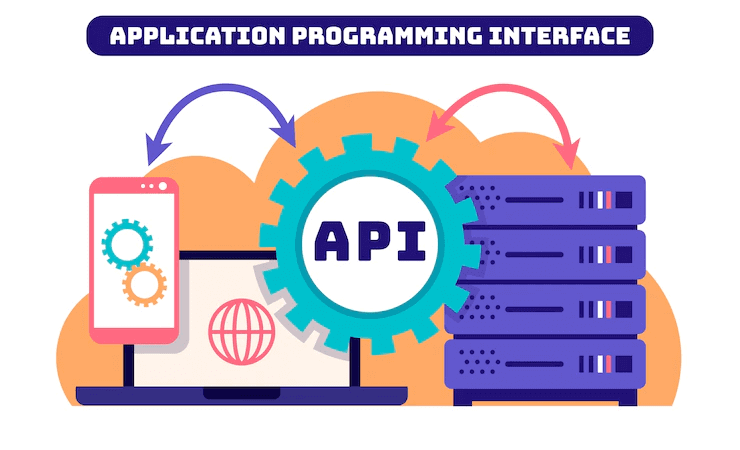Why Low Code is the Future of Business Applications

You’ve heard it before. Today, all companies are software companies.
In the digital age, it is impossible to achieve your business goals without a full arsenal of business applications to support internal functions. Having the right tools enables your employees to extract the maximum value from data, improve process efficiency, reduce manual work, and increase overall speed.
However, many organizations are struggling to equip their teams with the tools they need. This challenge can be reduced to five main obstacles:
- Lack of Capacity – IT developers are overwhelmed and unable to keep up with internal demand for custom applications.
- Insufficient Budgets – Individual departments and teams often cannot afford to buy the necessary applications or hire experts to create the tools they need.
- Old and Obsolete Systems – While there is a clear need to modernize outdated systems, delink them from business processes, and replace them with agile digital systems, this is annoying and costly.
- Skills gap : Non-technical business users (“unskilled employees”) lack the knowledge and experience to build the code-intensive applications they require in their daily workflows.
- Need for speed : Even with effective DevOps in place, the speed of development itself is often slow due to its complexity. As a result, maximizing developer productivity amid the growing demand for business applications is a huge challenge.
Fortunately, low-code / no-code platforms can handle all of the aforementioned challenges. For developers, “low code” capabilities allow them to work faster and more efficiently. For non-developers, “no-code” tools allow them to build, modify, and use business applications that meet emerging needs almost as soon as that need arises.
Low-code / no-code software enables organizations to meet new needs with speed and agility. They help organizations solve business problems, improve collaboration and team productivity, achieve business goals, and develop a mature digital ecosystem for competitive advantage.
How Lowcode / Nocode Platforms Work
Low-code / no-code platforms allow users to build complete applications using a visual development approach rather than the traditional method of writing thousands of lines of complex code, an otherwise complicated, time-consuming, and resource-intensive process.
Although low-code and no-code platforms work best when used together, there are differences between them and they are not interchangeable.
The platforms without code are designed for commercial users without coding expertise to build applications using reusable blocks and functional construction.
The platform code under some require coding, but for developers make it much easier and faster to produce new applications.
Both low-code and no-code platforms give IT the full ability to decide which users have access to data, functionality, and systems. IT maintains measures to secure data in accordance with company security policies.
When combined, low-code and no-code platforms enable rapid application development that meets precise business needs with the talent and resources available to you today.
Low code enables IT to create new reusable building blocks that business users can autonomously improve and maintain without any additional coding.
Unleash speed and unleash new levels of productivity
Low-code / no-code platforms help empower non-development teams within large companies to meet their own need for business applications without relying on or waiting for IT to deal with it.
With these capabilities, employees without development skills or information science experience can build functional business applications with modern user interfaces that can be integrated into their core business systems. At the same time, these platforms allow IT developers to complete complex tasks faster and more efficiently.
This is a great relief for busy IT and development teams, while also increasing the overall pace of application development. It also saves money by eliminating the need to hire specialized experts or purchase new business applications whenever a need arises.
However, no-code software is not a substitute for developers or data scientists. In reality, these platforms complement and extend existing in-house capabilities to provide business functions and increase speed and agility.
What are business applications?
Before we dive into all the ways organizations can use low-code / no-code platforms, let’s first look at some important terms.
When we say “business applications,” what exactly do we mean?
Business applications, also known as business software applications, are defined as the software that large organizations use to create and run basic business functions, such as sales, customer service, marketing, supply chain, or business intelligence. . They interconnect or integrate with other business applications and together create a larger business system.
What makes an application “enterprise-grade”?
Technology that is classified as “enterprise grade” is designed to serve corporations with hundreds or thousands of employees. These organizations require comprehensive, robust, scalable and secure solutions.
Deployment, Onboarding, and Security: 3 Big Business Application Challenges
Although they are designed to serve large companies, the very scale of enterprise-grade software can be an obstacle. Business solutions often come with problematic implementations that are time consuming and require expertise to get up and running.
For example, many organizations hire consultants to help them compare vendors or determine how to meet the needs of business applications internally. In addition to the cost of the software itself, implementation can be costly in terms of lost productivity. Lastly, ongoing management requires IT professionals, often making it necessary to expand the IT team and hire platform experts.
Business applications also often involve considerable time, energy, and resources that are spent on user onboarding. Let’s face it, no one thinks business apps are fun or easy to use. In fact, onboarding is one of the most challenging aspects of business technology.
Without effective onboarding, users will find it difficult to use business applications. According to a WalkMe study , 74.1% of employees indicated that lack of software training is the biggest barrier to using it. Only 14.5% said they were very satisfied using their workplace software.
Inefficient training and usability issues contribute to low digital adoption, which means users will not be able to utilize the important software features and capabilities that drive business value. If users only take advantage of some basic functions, the return on investment of the technology is automatically lower. In the worst case, employees will avoid using it entirely. For many employees, sticking with outdated or inefficient processes seems like an easier option than undergoing a time-consuming and confusing new platform training.
The security is another important issue to be taken into account to apply and use enterprise – level software. Identity and access management is a primary concern of security teams, who are tasked with ensuring that all software solutions and users meet the highest security standards.
Businesses need the platforms they use to have granular but clear permissions to securely manage thousands of users, which makes SSO integration crucial. Additionally, two-factor authentication has become a common requirement for many companies. It is important to note that many low-code and no-code platforms still lack this capability, so it is essential to verify that the solution you are considering offers it before purchasing.
Common examples of Saas business applications
SaaS business applications are driving massive growth in global IT spending. Worldwide, SaaS represents the largest segment of the market, with revenue projected to grow from $ 99.5 billion in 2019 to $ 116 billion in 2020, according to Gartner . By 2022, the SaaS industry is expected to be worth $ 151 billion.
SaaS products represent a large portion of business applications and will continue to dominate the IT market. This is a list of common SaaS business applications:
- Communications software (Zoom, Slack)
- Customer service software (Intercom, Zendesk)
- Email Marketing Systems (Hubspot, Marketo)
- Customer relationship management (Salesforce, Oracle CRM)
- Software de recursos humanos (Workday, SuccessFactors, Talentsoft)
- Enterprise Resource Planning Software (Netsuite, Microsoft Dynamics AX, SAP)
Commercial vs. custom apps
One of the main decisions that software buyers and business application administrators face when trying to invest in business applications is whether to purchase standard business applications or custom applications. Unfortunately, both options have significant drawbacks that burden internal IT departments and lead to higher costs.
Business applications are pre-built and have a set of functionality designed to serve as broad a user base as possible. They may be loaded with features and capabilities, but only a subset will be relevant to the exact business need or problem you’re trying to solve (and you’ll have to pay for all of them anyway).
While business applications may be less expensive initially, many place limitations on when and how often they can be updated and how they can adapt to new or changing business scenarios. After purchasing the software, you may have to pay for subsequent updates or new functionality.
Another downside is that getting the most out of these applications requires users to change the way they work. Rather than adopting a tool that can adapt to your organization’s needs and improve existing processes, business applications often require you to change your processes to accommodate software.
This creates a huge adoption challenge. First, employees are likely to be resistant to process changes they are used to and trust, especially when they also need to learn new software. The cost of understanding which processes need to change, of training employees, and of enforcing these changes is incredibly high for large companies.
Lastly, adopting a generic solution doesn’t do much for your competitive advantage or your brand’s ability to appear innovative.
Custom software is a popular alternative for its ability to meet the individual needs of each business. Unlike commercial software, custom solutions are created specifically for the organizations that purchase them and ensure that they meet the unique needs of each organization.
User adoption also tends to be easier. Tailor-made software adapts to employee workflows and is flexible enough to change as business needs and practices change over time.
However, building new software from scratch is expensive and resource intensive. Typically, organizations that want a custom application choose this option because there is no commercial solution that meets their needs. Whether they decide to hire a developer to build the software for them or develop it in-house, the broad scope of the project will require more time and a much larger budget.
It is also important to consider the cost of maintaining and hosting custom software. Every time the company wants to implement software updates or identifies the need to fix security issues, this will require a great deal of development time, which is costly for all companies and scarce for many.
How low-code / no-code platforms are changing enterprise application development
Usually, neither commercial software nor custom solutions satisfy the need for companies to rapidly implement highly customized commercial applications.
Low-code and no-code platforms have emerged as a life force and popular alternative to application development.
In fact, by 2024, three out of four large companies will use a minimum of four low-code development tools to support computer application development and non-specialist user development initiatives, according to Gartner . At the same time, low-code application development will account for more than 65% of all application development activity.
Why is the demand increasing?
There are some primary factors that are stimulating the demand for low-code / no-code platforms.
There is an essential need to modernize old legacy systems, a shortage of fully qualified developers, and a growing need for advanced business applications.
Organizations experience these challenges to varying degrees, but they are all interconnected. For traditional companies and even some startups, reliance on legacy systems that are deeply ingrained in basic business processes can be difficult to eliminate, even when the need for a more sophisticated tool is evident.
Finding qualified developers is always a challenge, and attracting them to your organization is another. However, without talented developers, building new internal systems from scratch is not an option. Even with them, the in-house construction of new tools is often unreasonably expensive.
Meanwhile, teams and departments across the company are demanding new tools that enable them to do their jobs better. In-house IT developers just can’t keep up.
Addressing all of these concerns requires valuable time and resources, which slows down business.
This is where the true value of low-code / no-code platforms comes in.
Low-code / no-code platforms equip businesses to meet demand
Low-code / no-code platforms enable and empower companies to meet the demand for new business applications without burdening IT, depleting resources, or filling high-cost talent shortages – three major barriers to acquiring and developing business applications.
As Gartner states in its report Low-code Business Application Platforms, “[Low-code application] vendors represent the forefront of the movement to democratize application development, increasingly replacing standard business application development in Java or. NET, and providing differentiating alternatives to existing business applications or SaaS applications. “
The ability for unskilled employees to use code-free visual development tools and meet their own needs not only democratizes an essential capability in companies, but also unlocks new levels of speed.
Compared to traditional software development, low-code / no-code platforms can increase programmers’ efficiency by 50% -90%, according to a study by 451 Research .
John Rymer, vice president and principal analyst at Forrester , suggested that low code can make software development 10 times faster than writing complex code.
At the same time, low-code development tools will allow developers to achieve unprecedented speed with automation and visual editing. With low-code and no-code platforms, companies can quickly transform their mere ideas into functional, time-saving applications. The result is greater speed and agility, while increasing the overall quality of work.
What kinds of applications should be built on low-code or no-code platforms?
When most people think of business applications, they automatically think of central systems of record, such as CRM, ERP, and HCM solutions. These systems, while powerful, represent only a small part of the digital ecosystem that employees interact with on a daily basis.
In reality, employees use dozens of applications designed to satisfy specific use cases in niches within larger domains. For example, marketers don’t just use CRM. They need a wide range of tools, including those that can monitor their specific KPIs, automate email marketing, perform data analytics and reports, manage social media planning, track content trajectories, manage campaigns and events, and much more. Each of these tools has its own costs, training requirements, security issues, user adoption challenges, IT management needs, and more.
According to Blissfully’s 2019 SaaS Trends report, the average company employee uses eight apps a day. Organizations with 501-1000 employees use an average of 151 applications, while companies with more than 1001 employees have a stack of 203 applications.
This is one of the reasons that low-code / no-code tools have emerged as essential assets. As the need for new and specific applications arises, organizations can position themselves to build highly customized, scalable, and secure solutions within the enterprise at low cost with low-code / no-code platforms. With them, you can empower employees and turn business ideas into functional solutions in a short period of time.
Let’s review some examples:
Marketing
Successful marketing requires high-level data analysis, constant experimentation, and fast delivery.
As Matt Nigh, a Seattle IT thought leader, wrote on Medium : “Any developer who has ever worked for a marketing team knows that you are never fast enough. Marketers want things now, even if they are imperfect. ”
Low-code / no-code platforms that help marketers reduce dependency on IT will ultimately enable them to achieve the level of speed and customization they seek. For example, no-code platforms that allow them to plan, execute and track cross-channel marketing campaigns, with all the necessary workflows and reports, will allow them to be more self-reliant and effective in reaching their goals.
Integration and automation of business applications
As employee digital assets continue to expand, a host of new technology, business and user challenges have emerged.
Integrating a high volume of complex and disparate systems is a huge technical challenge. And while companies understand the need to equip employees with emerging digital capabilities, they often overlook how the sheer number of tools can actually hurt productivity and lead to burnout.
As a result, there is a clear need for seamless workflows between platforms to protect speed and efficiency. Today, workflow automation is one of the most mature capabilities of low-code / no-code technologies, and can be applied to virtually any process.
For example, low-code / no-code software that integrates with your existing applications can streamline information exchange and automate workflows. This is the easiest way to meet the growing need for new capabilities while mitigating the effects of digital fragmentation.
For example, with a solution that enables seamless integration, IT will no longer have to manage accounts and permissions across multiple systems for each employee who needs access, because it can offer this capability through an integrated application. Achieving this ability through low-code / no-code application development reduces a heavy burden on IT and allows them to focus their expertise on more demanding tasks.
Software development
Although developers have the experience and knowledge to build complex code applications, they can benefit from low-code / no-code software to help them work faster and eliminate tedious processes.
Low-code / no-code capabilities have the potential to greatly reduce developers’ uptime, allowing them to prototype, test, and deploy tools at rapid speed. These platforms accelerate development by allowing developers to avoid repetitive and mundane work and to automate technical tasks.
With visual modeling, developers can gain a clearer understanding of requirements, create better designs, and ultimately build more sustainable systems. Another benefit of less manual coding is that there is less room for errors, allowing even greater cost savings in the long run.
The Role of Low-Code / No-Code Platforms in Enterprise Application Development: 2020 and Beyond
Today’s effective IT requires intelligent management of business systems, which increasingly means building a tailor-made digital ecosystem. As organizations continue to invest in digital transformation technologies, they must consider which applications and platforms will meet their specific needs at the lowest cost, with fewer internal IT resources, and with minimal disruption.
Enterprise application managers, IT team leaders, CIOs, technical directors, and department heads will elevate their IT infrastructure to the next level by adopting platforms that offer low-code and no-code application development.
Low-code / no-code technology enables organizations to overcome common hurdles in acquiring business applications and meeting unique needs. Departments throughout the organization have the potential to develop, test, and use applications without relying on IT.
After alleviating some of this demand, organizations can benefit from increased capacity for custom applications, lower costs, faster deployment, and easier transitions from legacy systems to modern applications.
Some companies have already begun to understand the value of low-code technology, but haven’t realized how incorporating no-code tools for business users can further increase those benefits. With both, developers can focus on high-value jobs, while business users enjoy the independence of building and improving applications to serve their own needs.






